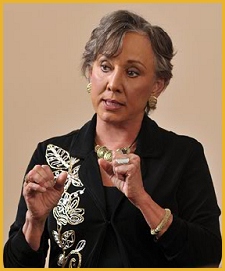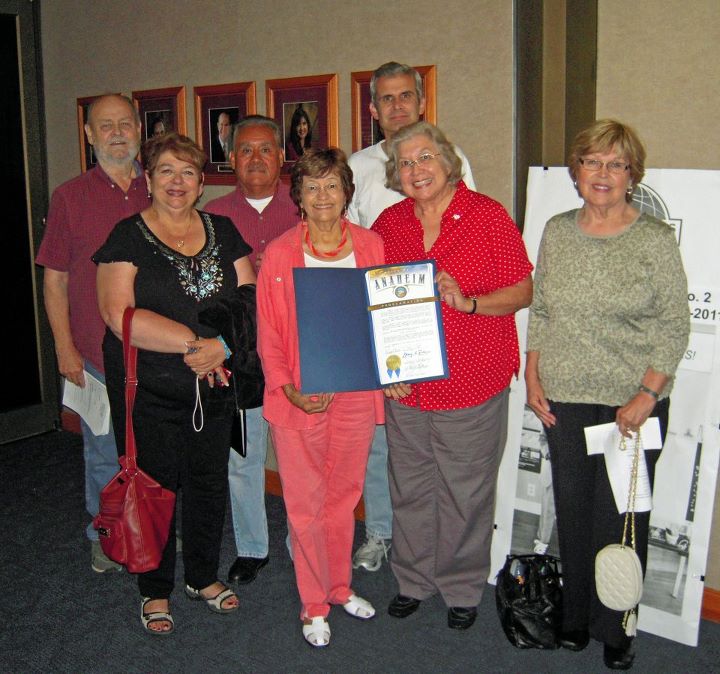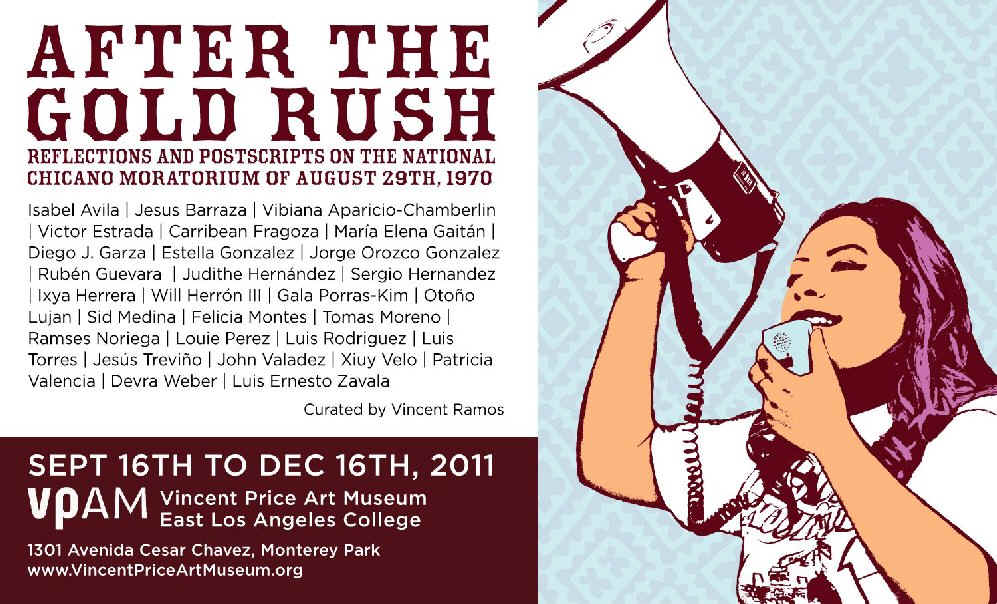|
Catarino Erasmo Garza Rodriguez was born near
Matamoros, Tamaulipas, on November 24, 1859, to J. Encarnación and María
de Jesús Rodríguez de la Garza. For the period and prevailing
circumstance we can consider him well-educated. He was schooled at
Gualahuises, Nuevo León, and San Juan College, Matamoros. Garza moved
to Brownsville in 1877 to work as a clerk for Bloomberg and Raphael's
Casa de Comercio. This firm for decades was the leading wholesale and
retail merchandiser in Brownsville and also had an outlet in Matamoros.
Catarino's brother Caledonia
had preceded him to Brownsville and over time created a thriving grocer
business and became engrossed in Democratic Party politics.
Once in the United States, Catarino was obviously
ambitious and moved from job to job in Brownsville, Laredo, and San
Antonio. In about 1880 Garza married Caroline Conner (Connor?) She was
the niece of Joseph "Pepe" Webb, longtime Cameron County Clerk
and Blue Club leader, who would from 1888-1891 serve as Brownsville City
Marshal. The Garzas soon had two daughters. They would divorce in 1889.
Garza seemed also to possess a wanderlust over the nine-year period that
he came to the U.S. He visited Mexico City and in 1882 was employed by
the Singer Sewing Machine Company as a traveling agent and lived in
Tamaulipas and Nuevo León.
In the year 1885 he was living in St. Louis, no
less. There he was appointed Mexican consul, a post he held for a short
time. In St. Louis he worked on La Revista Mexicana and served
as delegate to the National Convention of Wool Industries in 1886. It is
surprisingly that the number of Hispanics in the area would warrant a
Spanish-language publication. Prejudices and bigotry were already
present in this middle America city, for here he was angered by an Anglo
lawyer who said that “One white life is worth 10 Mexicans.”
Nevertheless Garza was widely exposed to American freedoms and
enterprise, and these may have planted the seed for his discontent with
the increasingly dictatorial regime of Porfirio Diaz in Mexico.
Elliot Young, in his book "Catarino
Garza's Revolution on the Texas-Mexico Border," writes:
"Over the next 30 years after Diaz took office in 1867, he ruled
Mexico as president or as the power behind the presidential seat. It was
after the generally recognized fraudulent re-elections of Diaz that
Garza started calling for revolution against the Diaz regime. However,
while in the United States, he also witnessed racism against
Mexican-Americans and condemned racist Anglo Texans and Mexican police
alike." He was the target of two assassination plots because of his
articles on “El Libre Pensador” against Coahuila Gov. Garza
Galan. He “antagonized all sides by criticizing everyone,” wrote
Young. For his part, Garza wrote that Diaz and his collaborators “are
not the country, nor the laws, nor the people; but are truly only
servants.”
In 1877, Garza said that when Mexico came under
Diaz it was: “The moment when the sun disappeared and oppression
reigned.” He also said in his autobiography La Logica de los
Hechos: “Mi pluma no sabe pintar, pero si reproducir,
fotografiar y estampar verdades (My pen does not know how to paint,
but knows how to reproduce, photograph, and imprint truths).” Also in
1877, he served 31 days in Maverick County Jail on a charge of libel.
That year, he was in Corpus Christi to found the club, Politico
Mutualista, and newspaper El Comercio Mexicano."
With his keen intellect and flair for oratory Garza
was a natural to become a leader. Early on he sought to promote issues
of social justice. "He promoted sociedades
mutualistas and helped found them [two] in Brownsville
[Hidalgo and Juarez], Laredo, and Corpus Christi in 1880, 1884, and
1888, respectively."
It was however through print media that he found
his strongest voice. León
A. Obregón and Garza founded El Bien Público in Brownsville
in 1877 (another source says 1879). On June 20, 1886, Garza published
the first issue of El Comercio Mexicano in Eagle Pass. In its
timeline the Eagle Pass Library states: 1886 Catarino
Garza started his inflammatory Spanish language publication at Eagle
Pass “El Comercio Mexicano” and used it to attack the person
and policies of Coahuila Governor Jesus Maria Garza Galan. It was the
first rumbling of revolution on the border against the Mexican
Government.
The
following year he and Gabriel Botello published El Libre Pensador
to also publicize abuses by the Mexican government under President
Porfirio Díaz and Coahuila governor José María Garza Galán. Gilbert
Culbertson tells us "Mexican
authorities threatened his Eagle Pass and Piedras Negras readers and
encouraged them not to buy or read El Libre Pensador. Because
of its contents, the newspaper and Garza's equipment were confiscated;
Garza was prosecuted for criminal libel and jailed for thirty-one days s
[in the Maverick County jail]. He was afraid of extradition, so he moved
after December 19, 1887, to Corpus Christi, whence Botello had fled and
where they resumed publishing El Comercio Mexicano in March
1888." This publication became very influential among Valley Texans
of Mexican heritage.
However,
Garza's cross-border activism was creating for him as many enemies as he
was making friends of the Mexican-American Valleyites, whom he sought to
defend. He would soon be propelled into the forefront of border
politics. It began in 1888 with the killing of Abraham Resendes (Recendez)
at Rio Grande City. There, inspector of customs, and former Texas
Ranger, Victor Sebree and A. Dillard, a deputy United States marshal
were involved. When the trial venue was moved from Starr County to Duval
County, the Mexican-American population of Rio Grande City became
"overly restive" and even more so when the two were acquitted.
The subsequent transpiring history by Alicia A. Garza published as the Rio
Grande City Riot of 1888 in "The Handbook of Texas Online"
is that in May of that year "Abraham Recéndez, a
Mexican-American resident of Rio Grande City had been arrested for
robbery by Starr county sheriff W. W. Sheley and after the arrest was
killed by Victor Sebree, United States Inspector of Customs and Sheley's
companion, while allegedly attempting to escape. The incident led to
public anger, particularly against Sheley, who previously had been
implicated in the lynching
of several Mexicans. Agustin and Silverio de la Peña organized a
faction to oppose Sheley and used the murders to argue that he was a
racist. They employed journalist Catarino
Erasmo Garza, a Mexican who was in Corpus Christi agitating
for opposition against Porfirio Díaz, to mount an editorial campaign
against their political opponents. In editorials that appeared in El
Comercio Mexicano, Garza charged that Sebree had assassinated an
unnamed Mexican prisoner. Garza then moved to Rio Grande City and
encountered Sebree during the September 1888 election, at which time
Sebree shot and injured him. Garza sympathizers threatened to lynch
Sebree and pursued him when he fled for refuge to Fort Ringgold. The
post commander there ordered the 200-man mob to disperse, which they
did. News stories, however, leaked that anarchy had broken out in the
city and that armed men roamed the streets ready to cause havoc. News of
the riot reached as far as Great Falls, Montana, where the Tribune
headlined "Rumors of War" between white and Mexican citizens
in Rio Grande City. The governor's office received a deluge of telegrams
reporting on the bloody war being fought on the border and testifying
that white lives were endangered. The secretary of state requested aid
from the troops at Fort Ringgold, and the United States government
ordered part of the Third Cavalry to reinforce them. Gen.
David
S. Stanley notified the governor that as commander of United States
troops in Texas he was responsible for protecting lives and property at
the scene and requested that the entire Texas Ranger force be sent to
Rio Grande City. The governor wired the sheriffs of Cameron, Hidalgo,
and Zapata counties to proceed to the city. He also ordered the San
Antonio Rifles, the Belknap
Rifles, and the Houston
Light Guards to be ready to march on a moment's notice. The Bexar
county sheriff joined the sheriffs of Hidalgo, Cameron, and Zapata
counties, and eventually they had 250 men under their command
ready to move into Starr County. The riot soon dissipated, threatened by
the reinforced troops. Sebree remained in the position of United States
inspector of customs."
Garza,
in fact, had been arrested by
Texas Ranger captain John
R. Hughes, charged with libel for criticizing former Texas
Ranger Victor Sebree for killing Abraham Reséndez, and taken to Rio
Grande City. Garza, had indeed, "penned scathing articles
denouncing the defendants, the Duval County jury, and "Anglo"
justice." Lt. W.H.
Chatfield in his 1893 publication "The Twin Cities of the
Border—Brownsville, Texas & Matamoros, Mexico-- and the Country of
the Lower Rio Grande" relates a little about the confrontation
of Garza and Sebree. Chatfield's account is not sympathetic to Garza as
Chatfield was trying to downplay negative border incidents in order to
raise money for his giant irrigation project. To quote"…he
[Garza] came in contact with two of the parties of the parties whom he
had attacked in the columns of his paper—Messrs. Sebree and Norris;
the former was a United States marshal at the time, and had been
repeatedly been warned that Garza would shot him on sight; so upon
seeing Garza come towards him on Laredo street, he was prepared for an
attack. Sebree was alone at the time, while Garza had one of his
followers with him; the battle opened on both sides simultaneously, the
odds being two to one, but Sebree stood off both men slightly wounding
Garza. [Garza's companion, a man named Lopez, was also wounded.] The
affair caused the wildest excitement, the Mexican population arming
themselves, and for several hours the town was given over to mob rule.
Sebree and Norris were threatened with vengeance dire, and were fired
upon while proceeding to Fort Ringgold, in
a carriage [another account has Sebree mounting a horse and
fleeing to the fort] to lay their case before the commanding officer,
Colonel Clendennin (sic). The mob pressed at their heels and demanded
the refugees, but this was refused, peremptorily and prompt dispositions
were made to oppose force with force. Indictments were issued against a
number of rioters and the cases are still pending in the District Court
at Brownsville, although Mr. Sebree has repeatedly requested quashals in
all of them."
The
riot made state and national news. The New York Times of
September 25, 1888 ran three back-to-back stories datelined Rio Grande
City, San Antonio, and Brownsville. The first one was headlined MEXICANS
VERY AGGRESSIVE RIO
GRANDE CITY ASKING FOR TROOPS TO PROTECT IT The accompanying story read:
Catrino (sic) Garza, who was shot Friday last at this place by Victor
Sebree, is still living and has a chance of recovering, as the surgeon
at Fort Ringgold says the ball struck no vital part. Sebree, who was
pursued and shot at by the Mexican friends of Garza, reached Fort
Ringgold in safety and surrendered himself to the commanding officer,
Col. Clendenning (sic). He will be kept in military custody until the
Sheriff of this county feels that he can protect him. The Mexicans made
a demand on the military for Sebree, but Col. Clendenning refused to
deliver him up, and notified them that any attempt to take him by force
would draw the fire of the Gatling guns and of the entire command on
them. The soldiers of the garrison were each served with 100 rounds of
ball cartridges and slept on their arms Saturday night. In order to
prevent the ordering of more Rangers and any communications between Fort
Ringgold and the department headquarters, the Mexicans tore down the
telegraph wires between this place and Fort Ringgold. Wiser counsel in
connection with the possible recovery of
Garza, has had the effect of restoring order." A second
article put the number of rioters at 200. As serious as the incident
was, media publicity blew it all out of proportion to its significance.
As a result law enforcement personnel soon inundated the town.
Hughes
in his own book, Captain John R. Hughes Lone Star Ranger, writes
that on 9/26/88 Lt.-Col. David R. Clendenin sent a dispatch which calmed
the nerves of the new governor, Lawrence Sullivan Ross. It read "I
have protected Sebree and others from the mob. No property has been
destroyed or depredation committed in Rio Grande City. Affairs are not
so bad as represented. If any real danger had existed I would have used
the troops to prevent bloodshed. Poses from adjoining counties arrived
last night and to-day. All quiet.". Hughes goes on to relate:
"On September 29 Sheriff Brito and his posse left Rio Grande City
for Brownsville to deliver Sebree there for safety. Garza continued to
improve. It was, in the opinion of his doctors, "his critical
day", but if he should die then it was expected that the riots
would resume. Garza did not die and things remained peaceful. During the
next few weeks Rangers investigated the "shooting scrape which had
caused such trouble" and arrested two dozen men on charges of
conspiracy to murder and for assault to murder. They appeared in court
and were released on bail in amounts of $500 to $5,000 to appear before
the next term of district court. Again this was the combined efforts of
companies D and F together. In this matter no individual Ranger's name
appeared, merely that men from both companies made the arrest."
While
recuperating, Garza commenced writing an autobiography focusing
primarily on the last twelve years of his life. Titled La Logica de
los Hechos (or the Logic of Acts) it was acclaimed positively in
South Texas and stamped him as an intellectual. More than that, it
helped to portray the difficult situations that the Mexican faced in
Texas. He was, therefore, one of the first to use print media to defend
the interests of Mexicans in Texas.
Garza's
life and endeavors had been suspect from 1886 when rumors began to that
he was recruiting a revolutionary army to act against Mexico. The
Mexican consul at Brownsville, Manuel Trevino, quietly approached James
Wells, the political boss of South Texas, to probe the possibilities of
bringing charges against Garza associates that were purported to be
violating the Neutrality Act. Wells concluded that although Garza was a
critic of the establishment, he had no military following and gave no
intention of plotting a revolution. When the rumors resurfaced in 1888,
Wells traced them to a Republican opponent, R. B. Creager of
Brownsville, who hoped to use the Starr County turmoil to elect
Republican sheriff candidate, Don Lino Hinojosa, over Democrat W.W.
Sheley.
After
his divorce from Caroline, Garza moved to Palito Blanco, Texas. Here he
met, fell in love with, and married Concepcion Gonzales, a daughter of
the highly-regarded rancher, Don Alejandro Gonzales. Catarino and
Concepcion would later have a daughter. Upon settling in at the rancho
Garza began publishing El Libre Pensador (The Free Thinker),
along with El Baluarte (The Bulwark). In these publications he
increased his criticism of President Diaz. He condemned him for
"abandoning his pledge not to seek re-election, for establishing a
military dictatorship, and for abolishing freedom of the press, liberty
of speech, and the right of amparo (sequestration)." Even
more pointedly he charged "that Mexican elections had become a
farce and that Diaz was the tool of the church party, the old
Centralists, and the Imperialists."
In
1890 Garza would hit closer to home by joining with General D. Ignacio
Martinez, who was editor of the Laredo newspaper El Mundo, in
attacking, in a war of invectives, the governor of Tamaulipas, General
Bernardo Reyes. The two overstepped the bounds when they promoted a
revolution to be led by Francisco Ruiz Sandoval. Subsequently Martinez
was assassinated on February 3, 1891. When, in a biography titled El
Burro del Oro (The Golden Ass), Garza satirized Reyes, the general
endeavored to bring libel charges against him. Garza, fearing for his
life, then hid out in the brush country.
Non-violent
confrontations by Garza were not affecting changes in Mexico. He would
turn to physical action. He reputedly began to organize a force to
invade Mexico. On September 15, 1891, he led a group of twenty-six armed
men across the Rio Grande at Mier, Tamaulipas, and proclaimed the
"Plan Revolucionario." The revolutionaries returned to Texas
after nine days and a brief engagement with Mexican forces. Over the
following months, the Garcistas made at least two more incursions into
Mexico. According to Garza's own records, by the end of 1891 his army
had 63 commanders, 186 officers, and 1,043 soldiers.
There
is no way to verify actual numbers and speculation was rife. As an
example: The Brenham Weekly Banner reported on September 24,
1891: "A special from Rio Grande City says Garza and nearly 200
revolutionists were seen Sunday night sixty miles south of Carmargo,
pressing for the Rio Grande river and pursued by Mexican troops."
There
were repercussions, so negative, that they may have brought more
followers of Garza into the fold. In short, the Mexican government moved
soldiers under the command of General Lorenzo Garcia into the border
area. Under orders from the general, dissent was brutally suppressed. A
special agent of the United States treasury was said to have reported
"no less than eighty people shot because of suspected pro-Garza
sympathies." This transpired before the end of November 1891.
With
Texas Rangers having been withdrawn to confront Knights of Labor
activity, the U.S. Army had to be used to breach the gap in law
enforcement. By December 1891 United States Army troops had been sent to
patrol the border to supplement the available troops from Forts Brown,
Ringgold, and McIntosh (in Laredo). In search of neutrality violations
they accomplished little. The army generally was ineffective as it
didn't have the mobility and horsemanship of Garzas mounted
revolutionaries. They did learn that "on September 15,
approximately 60 men had crossed the Rio Grande, engaged Mexican troops
in battle, and afterwards, had disappeared into southwest Texas."
One
short skirmish occurred, at Retamal Springs. On December 22, a
detachment under Captain John Gregory Bourke of the Third Cavalry met a
party of armed men. After a short skirmish in which one soldier was
killed, the band fled into the brush country. The Handbook of Texas
Online tells us a little about Bourke. It relates " Bourke was a
well-known Indian fighter, writer, crusader for Indian rights, and
anthropologist before he reported to Fort Ringgold, Rio Grande City,
Texas, in 1891. He had already fought Indians in the Southwest and on
the Great Plains and had served on the staff of Gen. George Crook from
1871 until 1886." Joseph C. Porter then perhaps exaggerates
Bourke's effectiveness here when he states " Bourke's two-year tour
of duty along the lower Rio Grande established his significance in Texas
history. He became pivotal in the suppression of Catarino
Garza's effort against the government of Porfirio Díaz in Mexico.
The Mexican government demanded that the United States act
because Garza had based his force in Texas. In turn, the federal
government instructed the state of Texas, federal marshals, and the
United States Army to stop the Garzistas. Initially Bourke noted that
many South Texans–Mexican Americans and Anglos–openly supported
Garza and that Fort McIntosh in Laredo and Fort Ringgold together
mustered only two troops of cavalry and two companies of infantry with
which to patrol an area of 500 square miles. Nonetheless, Bourke
followed orders, and his raids on ranches suspected of harboring
Garzistas earned him the undying enmity of many South Texans."
One
other Army soldier deserves note here. It is Allen Walker , who was
awarded the Medal of Honor for his heroic action in the Valley. His
story is " Allen Walker was born in Patriot, Indiana, on January
19, 1866, the son of William and Eveline Walker. He enlisted in the army
at Indianapolis in 1884 and served in the Nineteenth United States
Infantry Regiment in South Texas. He was discharged at San Antonio in
1889 and promptly reenlisted in Company C, Third United States Cavalry.
In December 1891 he was involved in a series of skirmishes during the
Garza
War in southwest Texas. On December 30 he was acting alone as a
courier from Fort Langhorne when he saw three armed Mexicans ahead of
him. After they refused to stop, he fired, killing one of their horses.
The riders escaped, but left behind papers including a proclamation
inciting revolution. Capt. John
Gregory Bourke stated, "This man exhibited so much courage,
efficiency, coolness, and self-reliance while away from his command that I feel
constrained to recommend he be awarded the Medal of Honor." Walker
married
Alvina Fuentes at Fort Ringgold; she died in 1898. Walker was later
commissioned as a first lieutenant in the Philippine Scouts during the
Philippine Insurrection and was
awarded the Silver Star. He was promoted to captain in the scouts on
August 14, 1908. He retired from the military soon after the scouts were
disbanded in 1911, and resided in Laredo. Walker became a deputy U.S.
marshal for the Southern District of Texas in 1914 and went on to serve
as marshal for the same district. Allen Walker was married to Enriqueta
Peña in 1926; they had seven children. He died at Brooke Army Hospital
on September 10, 1953. He is buried in the Catholic Cemetery at Laredo.
Garcistas
soon left the area as newly appointed special rangers proved effective
and potential recruits opted for neutrality. In 1892 Garza reportedly
learned that he was wanted by the special rangers and fled Texas. Garza's
departure did not immediately stop the rebellion that had enlisted
" a broad cross-border alliance of ranchers, merchants,
peasants, and disgruntled military men." By 1892 they may have
deteriorated into a "bandit horde" and soldiers of fortune.
James
Wells worked diligently to influence his ranchero friends to
remain neutral in the matter. Wells didn't have much faith in the Army's
ability to cope with the guerrillas in brush country. " He
contemptuously charges that the soldiers frequently passed along senderos
(trails) within "arms length" of their quarry without
knowing they were there." Working with Governor Hogg, the two
initiated a secret Ranger task force that one by one tracked down and
killed or harried the offenders out of Texas. As an example of its
effectiveness, on December10, 1892 an armed body of riders crossed into
Mexico at San Ygnacio, fifty-three miles below Laredo. They surprised a
Mexican army encampment and killed two officers and four enlisted men.
While some blamed Garza, the Mexican government
fingered bandits Mangas de Agua and Francisco "El Tuerto"
[one-eyed] Benevides as the culprits. They were arrested in Texas and
subsequently depredations sharply diminished. Eventually after two years
of sporadic fighting, the combined efforts of the U.S. and Mexican
armies, Texas Rangers, and local police finally succeeded in crushing
the rebellion. Years later, among Well's papers was found a
"hit" list of thirty names, Catarino Garza among them. All had
been eventually arrested or killed, except Garza.
The
true story of Garza's last years is shaky. One historian writes:
"After leaving the state in 1892, Garza traveled to various places,
including Nassau, Jamaica, and possibly Cuba and Florida. By March 28,
1893, he moved to Matina, near Limón, Costa Rica, and a San José press
published his pamphlet indicting the Díaz regime, La Era de
Tuxtepec en México o Sea Rusia en América. Garza participated in
a revolutionary uprising in Colombia. Official sources report that he
was killed in storming the jail at Bocas del Toro, Colombia (now in
Panama), on March 8, 1895."
Catarino
Garza was obviously a man before his time. It would take 30 more years
before Mexico became a true republic following the revolution of
1910-1920. He was an idealist who disclaimed any enmity towards the
United States or its troops. Joe Robert Bauch notes that the Catarino
Garza or Tin Horn War "left no deep scars and, consequently, was
soon forgotten, its details hidden in misleading and hearsay newspaper
accounts, self-serving military reports, generally inaccurate
recollections, and a few grossly erroneous histories." This
explains why Garza's efforts are unfortunately not well known, even
today. The legacy that he initiated was to speak up for Tejanos being
oppressed in South Texas and Mexicans in Mexico. That took courage and
entailed personal risk. It took decades before others, such as Jose T.
Canales, would follow in Garza's footsteps.
|





















































 Born in Mexico city, he moved with his family to California at the age of 8 where he grew up in the Boyle Heights section of Los Angeles. He created set designs for the Nosotros Theater Organization and other equity waiver theaters in Hollywood while attending Los Angeles City College. At UCLA he earned his BA and MA in Art History specializing in Pre-Columbian art as a commitment to his Chicano community.
Born in Mexico city, he moved with his family to California at the age of 8 where he grew up in the Boyle Heights section of Los Angeles. He created set designs for the Nosotros Theater Organization and other equity waiver theaters in Hollywood while attending Los Angeles City College. At UCLA he earned his BA and MA in Art History specializing in Pre-Columbian art as a commitment to his Chicano community. 















 So
why was Vidaurri so eager to align with the nascent Confederacy?
Political survival. He had lost his best general and military
strategist, Juan Zuazua, to assassination that winter. With the
end of the Reform wars, President Benito Juarez was consolidating
federal control and was sure to challenge Vidaurri’s virtual
independence along the northern frontier. And if Juarez did not
unseat the northern caudillo, a European power might — France
and others were already making noise about invading Mexico over
its debts.
So
why was Vidaurri so eager to align with the nascent Confederacy?
Political survival. He had lost his best general and military
strategist, Juan Zuazua, to assassination that winter. With the
end of the Reform wars, President Benito Juarez was consolidating
federal control and was sure to challenge Vidaurri’s virtual
independence along the northern frontier. And if Juarez did not
unseat the northern caudillo, a European power might — France
and others were already making noise about invading Mexico over
its debts.














